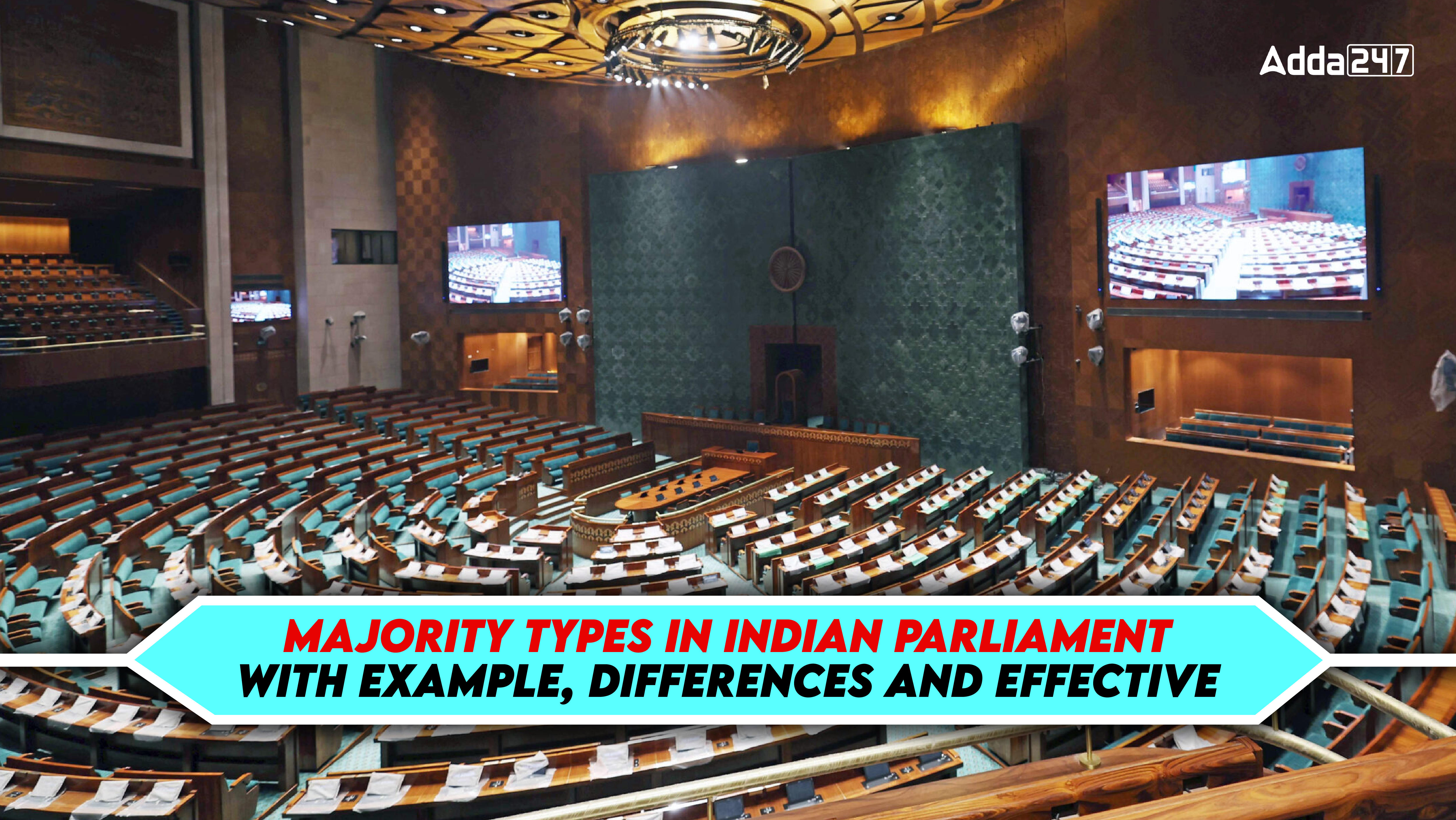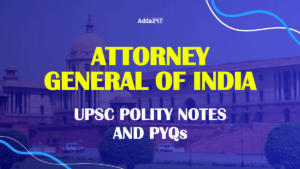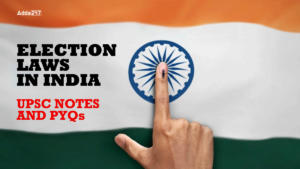Table of Contents
The President, the Rajya Sabha (Council of States), and the Lok Sabha (House of the People) make up the Parliament of India, which is the highest law-making body in the country. The formation of laws for national governance is one of the Parliament’s main duties. Simple, Absolute, Effective, and Special Majority are the four types of majority, that the Indian Constitution does not specifically list that are needed to pass various bills, but the interpretation of the Constitution does.
Majority in the Indian Parliament
“Majority” in the sense of parliament refers to the minimum number of votes needed to approve a resolution or a bill. As a concept, it is important for parliamentary procedure since it ensures that a majority of legislators would support every decision made, respecting the principles of democracy. Enacting laws and guiding the ways of governance are the responsibilities entrusted to the Indian Parliament, which is the oldest and largest legislative body in the country.
As the highest law-making body of the largest democracy in the world, it must ensure that every decision it makes fulfills the democratic principles. A bill is introduced in the Parliament and becomes law when the President gives his or her assent. The future of proposals and policies in the Indian Parliament is mostly decided by the majority.
Majority Types in Indian Parliament
In the Indian Parliament, decisions on many different matters need the following four types of majorities:
- Simple Majority
- Absolute Majority
- Effective Majority
- Special Majority
In the following article, the majority – definitions, applications, and importance are covered.
Simple Majority
A Simple Majority is known as a majority of the members present and voting in the House. The Ordinary Majority, Functional Majority, and Working Majority are other names for the “Simple Majority.” Let’s take an example where the Lok Sabha has 324 members present and voting. Here,
[324/2 + 1] = 163 is the simple majority
Application of the Simple Majority
Article 100 of the Indian Constitution, a majority of the members who are present and voting decide all questions at any sitting of either House or joint sitting of the Houses. This shows that the Constitution’s general rule for answering questions in the Parliament is the simple majority. Under these situations, “Simple Majority” is used:
- Approval of various bills like money, financial, and ordinary bills.
- The Motion of Thanks, No Confidence Motion, Adjournment Motion, and Censure Motion Passing.
- Article 67 – The removal of the Vice-President in the Lok Sabha.
- Article 356– Authorizing the President’s Rule to be implemented.
- Article 360 – Declaration of financial emergency (Never Implemented)
- Article 93 – Election of Speaker and Deputy Speaker of the Lok Sabha.
- Article 89 – Election of the Rajya Sabha’s Deputy Chairman.
- Article 352 – The Lok Sabha must approve a resolution to end the National Emergency before it may continue.
Effective Majority
An “Effective Majority” is defined as a majority of the House’s total membership, excluding vacant seats. Or it represents the majority of the House’s then present effective strength. Let’s take an example where there are 15 vacant seats in the Lok Sabha out of a total of 543 seats. Here,
Majority is equal to [(543-15)/2 + 1] = 265
Application of the Effective Majority
In the following situations, the Effective Majority is used:
- Article 67 – Removal from the Rajya Sabha of the Vice President.
- Article 90 – Removal of Rajya Sabha Deputy Chairman.
- Article 94 – Removal of the Lok Sabha’s Speaker and Deputy Speaker.
Absolute Majority
An “Absolute Majority” is defined as a majority of all House members, regardless of the number of vacant seats or absentees. For example, Given that the Lok Sabha has 543 overall strength, the Absolute Majority of the Lok Sabha is
[(543/2) + 1] = 272
Application of the Absolute Majority
- Absolute Majority is not specified by the Constitution as an alone condition in any situation or for any reason. But only used as a part of the Special Majority in certain situations.
- Therefore the “Absolute Majority” is not used by the Parliament on a routine basis.
- For the creation of both central and state governments, it is mainly used.
Special Majority
Different types of special majority are present and used for a variety of purposes.
Special Majority-I
The majority of the House as a whole (all members) and a two-thirds majority of those at present who are voting is known as the “Special Majority-I.”
Application of Special Majority-I
In the following situations, the “Special Majority-I” is used:
- Article 368 – Constitutional Amendment.
- Article 124 – Supreme Court Judges’ removal
- Article 217 – High Court judges removal.
- Article 148 – Removal of India’s Comptroller and Auditor General (CAG).
- Article 324 – Removal of the Chief Election Commissioner (CEC).
- Article 352 – Parliamentary approval of the proclamation of National Emergency.
- Article 243K- Removal of the State Election Commissioner (SEC).
Special Majority-II
Special Majority II is the two-thirds majority of the House’s total membership.
Application of Special Majority-II
In the following situation, the “Special Majority-II” is used:
- Article 61 – Impeachment of the President.
The process of impeachment of a President solely on the base of “Violation of the Constitution” from office before the end of his five-year term. This motion must be approved by two-thirds of the members in both Houses of Parliament separately.
Special Majority-III
The Rajya Sabha is the only entity that uses Special Majority-III.
Special Majority-III is known as the two-thirds majority of the members present and voting. Only the Rajya Sabha can use the Special Majority-III.
Application of Special Majority-III
In the following situations, the “Special Majority-III” is used:
- Article 249 – Legislative process about matters on the State List.
- Article 312 – Establishment of new All-India Services.
Majorities in the Indian Parliament- Importance
- Ensuring Representation: Different majorities work accordingly to make sure that the interests and opinions of the people are reflected in their decisions.
- Balanced Governance: They ensure a balanced approach to governance during the decision-making process.
- Maintaining Democratic Principles: It makes sure that important laws and constitutional changes are thoroughly discussed and prevents choices from being made on impulse.
- Protecting Constitutional Integrity: Special majorities, such as those required for Constitutional Amendments, make sure the core values that underlie the document aren’t changed without broad consent. By doing this, the stability and integrity of the constitutional form are protected.
- Preventing Dictatorship of the Majority: The Indian Parliament works to prevent the despotism of the majority by establishing different majorities for several decisions. It ensures that the opinions of minority groups are taken into account and guards against the imposition of choices that might disproportionately affect some groups.



 Attorney General of India UPSC Notes (Ar...
Attorney General of India UPSC Notes (Ar...
 Election Laws in India UPSC Notes
Election Laws in India UPSC Notes
 Indian Parliamentary Forums UPSC Notes
Indian Parliamentary Forums UPSC Notes







